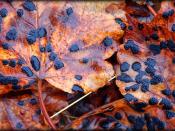A disease is 'a disordered or incorrectly functioning organ, part, structure, or system of the body resulting from the effect of genetic or developmental errors, infection, poisons, nutritional deficiency or imbalance, toxicity, or unfavorable environmental factors; illness; sickness; ailment'.
Six examples of diseases are;
-Cancer
-Meningococcal Disease
-Hepatitis B
-Hepatitis A
-Hepatitis C
-Black Death
These can be transmitted by touch, saliva, air (breath), and other senses.
People were likely to suffer early death in the Medieval Times because there were no cures and they relied on superstitions.
Diseases spread quickly in Medieval cities because they were not very knowledgeable about diseases and didn't know about quarantine and how to stop the disease spreading.
An epidemic is 'An outbreak of a contagious disease that spreads rapidly and widely'.
Some of the things that the Medieval people believed are; (also in included some facts about medieval medicine)
Medicine during the medieval era was multi-faceted, relying on the skills of several classes of practitioners.
The ill and aged were treated by university trained physicians, monks, or folk healers, depending on the patient's socio-economic class. Though medical practices and procedures in the middle ages are generally considered obsolete and relying on herbal remedies, prayer, spells and incantations, there were also surgeries performed and cures perfected that are similar to modern procedures.
The first medical university was founded in the tenth century in Salarno, Italy where Greek manuscripts written by such physicians as Hippocrates were studied. Medieval physicians followed the Greek belief that the body was made up of four humors - sanguine (blood), choler, phlegm and melancholia. They believed that the primary cause of illness was an imbalance of the humors, each of which were given qualities of heat and moistness. Sanguine was hot and moist, choler was hot and dry, phlegm, cold...


